What You Need To Know About Hong Kong’s Favorite Dim Sum
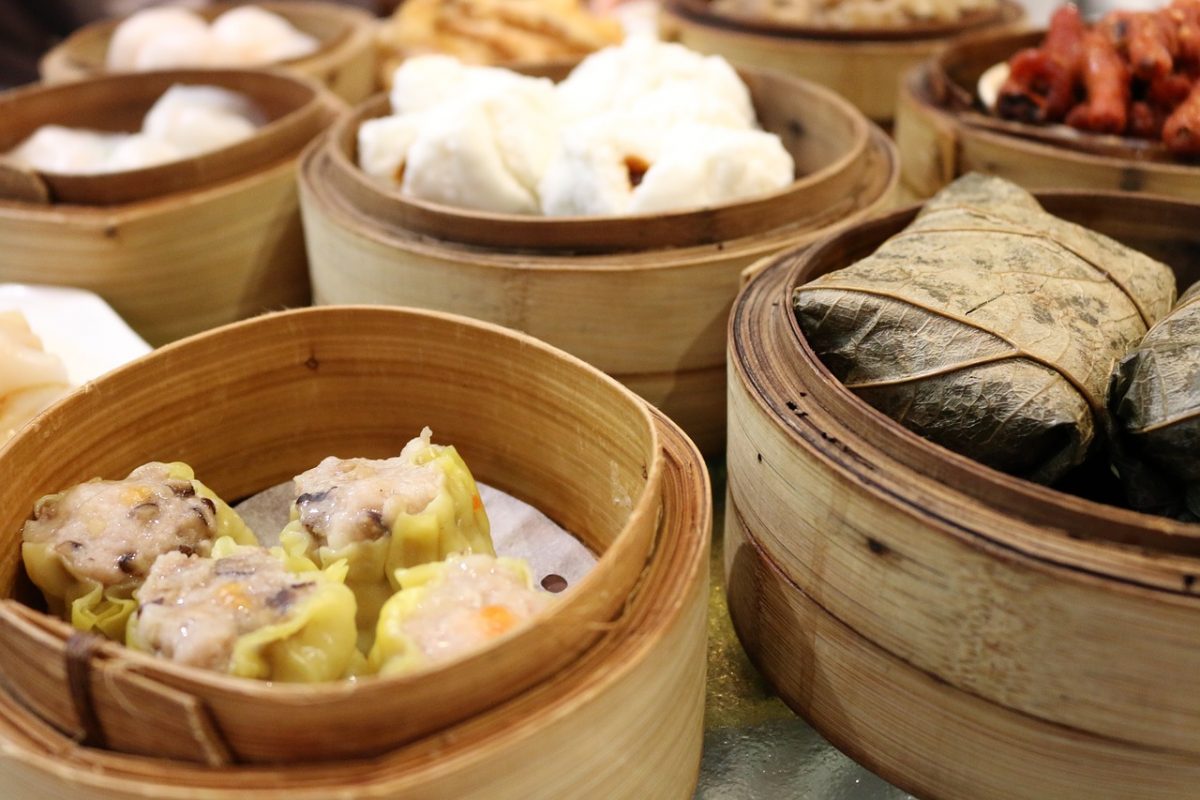
If you spend any time in Hong Kong or in Asia in general, you won’t be able to avoid eating dim sum. And you shouldn’t, because these little dishes of meat and vegetables can be absolutely delicious. If you’re interested in trying the best dim sum on offer, there are a few tricks to finding them and eating them. And if you learn these tricks, you’ll be ready to sate your hunger a little at a time in Hong Kong.
What Is Dim Sum?
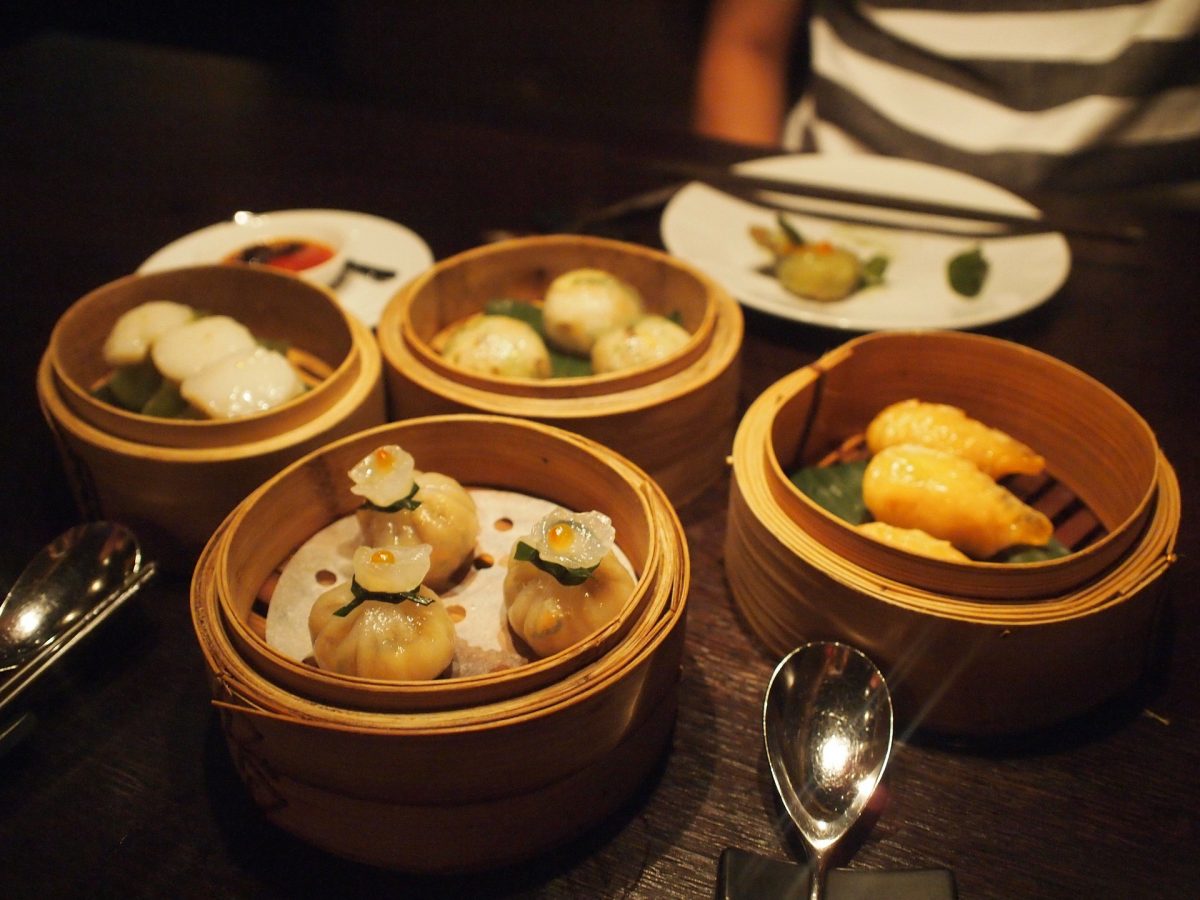
© Photo by Rootport on Pixabay
Dim sum is more than food, it’s a way of eating. It describes a meal in China during which small plates of food are served along with tea. You’ll find it in Hong Kong and in small cities as well as major ones like Shanghai. This is a very social type of meal, best enjoyed with friends and family. In fact, the literal translation of dim sum is ‘touch the heart’, which reflects the closeness this dish encourages.
The history of dim sum is a long one and it began on the Silk Road. Centuries ago, rural farmers would head to their local teahouses for a refreshing cup and some good company. Over the years, the owners of the teahouses started serving small snacks. And today, you can find dim sum all over China and parts of Asia.
You’ll find lots of different types of dim sum, from dumplings to bao and shumai. They come with different herbs and spices and different meats, but the core is the same. They’re about sharing and having a good time with the people you love. And they’re delicious as well.
Tea And Dim Sum
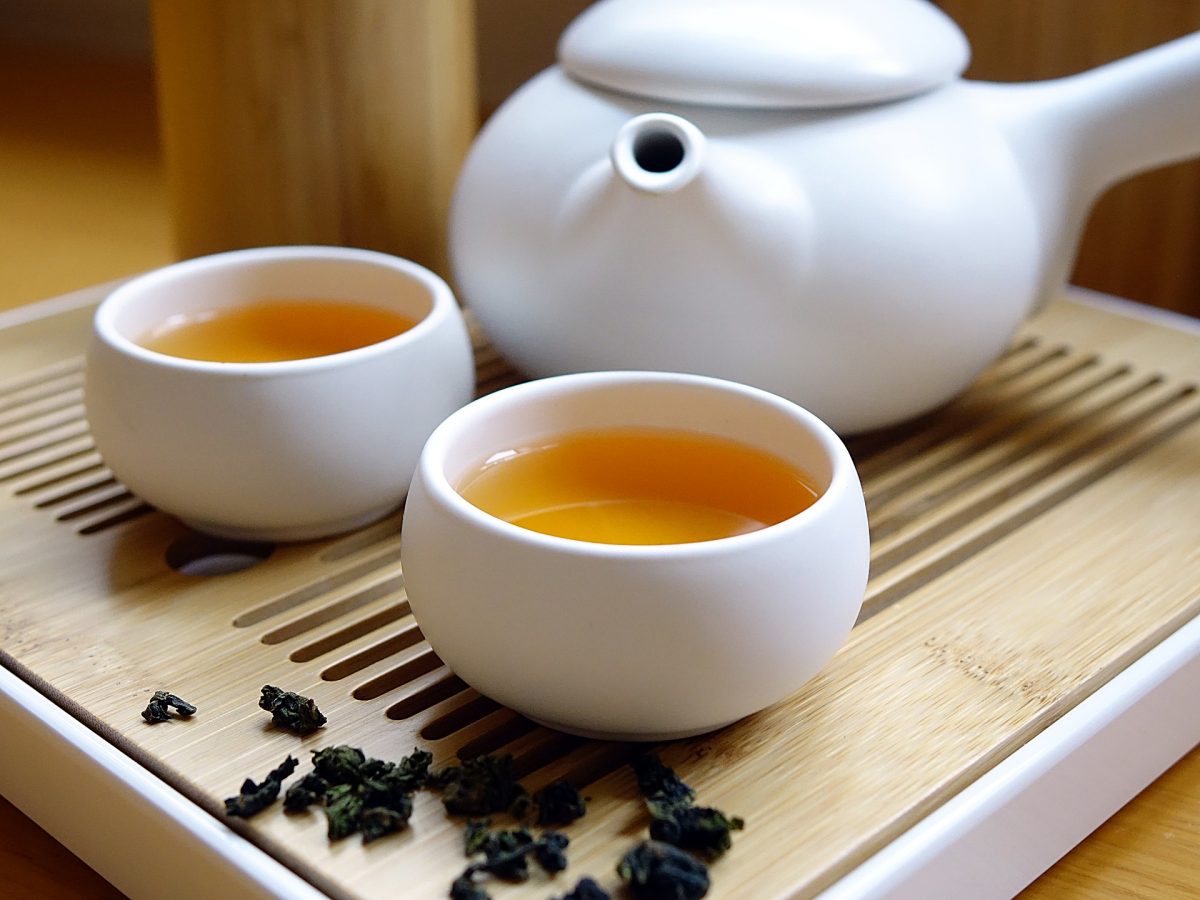
© Photo by Jason Goh on Pixabay
You absolutely must drink tea when you have dim sum. It’s all a part of the experience. In fact, it’s customary to choose the table’s tea before you choose the food. Some of the most common choices are:
Jasmine tea, which has a fresh and mellow flavour.
Shou Mei tea, a white tea with a strong flavour.
Oolong tea, which can range in flavour depending on how it’s processed.
Chrysanthemum tea, which is a light and sweet team that goes best with steamed dim sum dishes.
Pu’Er tea, which is a black tea with an earthy taste and goes best with fried dim sum dishes.
Green tea, a staple that goes with anything.
So, you can choose your tea based on your own tastes or on the food you’re ordering. But make sure that it’s as important to the meal as the food itself for the full experience.
How To Eat Dim Sum
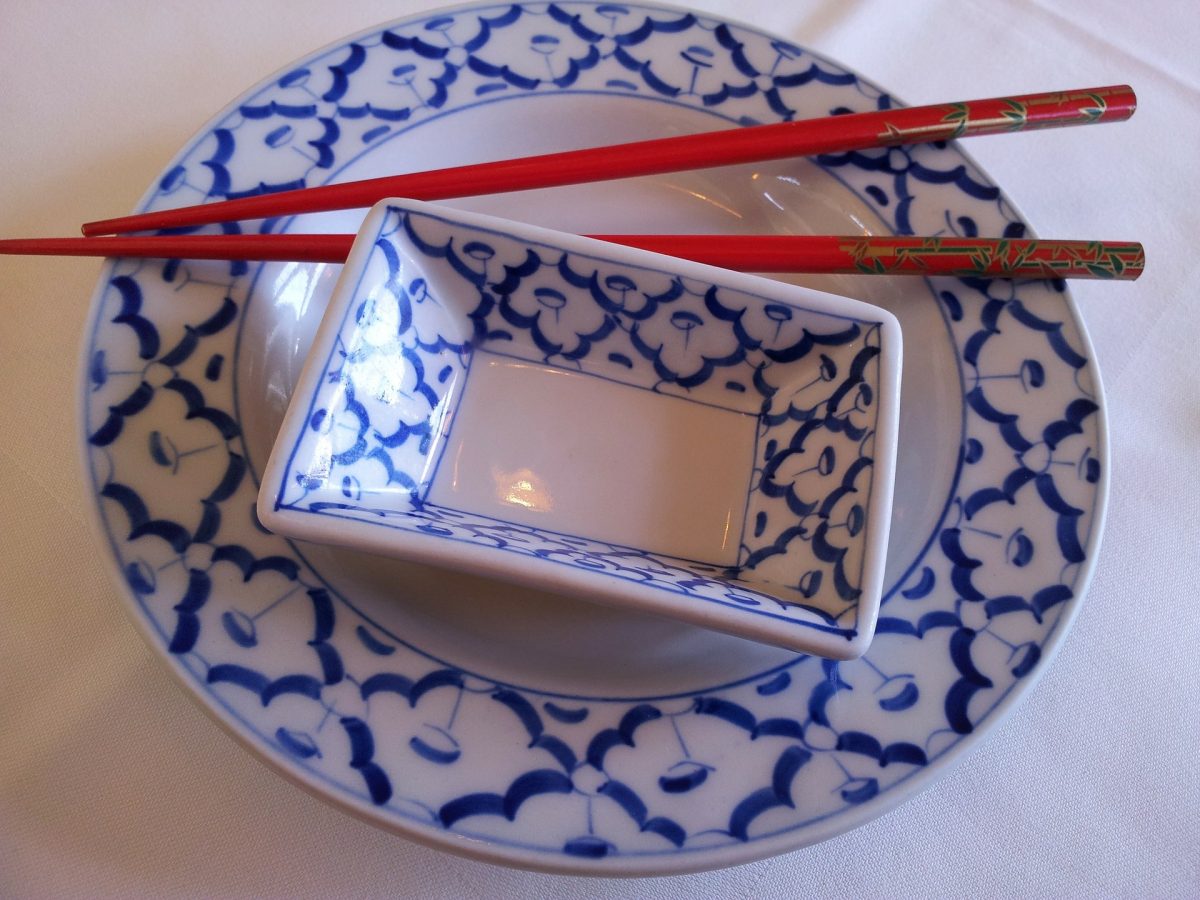
© Photo by Rita on Pixabay
For foreigners, eating with dim sum can be difficult. The customs are complicated, you never know what’s inside the little buns, and chopsticks are a nightmare. To make it a little easier, here are some tips:
Ask for a fork if you struggle too much with the chopsticks, no one will mind.
Take small bites and hold onto the food in between bites.
Use the provided sauces sparingly, because each dim sum dish will already be spiced.
Don’t serve other people with your chopsticks, nobody wants your saliva on their food.
Don’t order everything at once, you can always go back for more.
Never take dim sum home with you, as it won’t taste right reheated.
When you need more tea, move the teapot lid aside and it will signal your need to the waiter.
And to say thank you in the traditional way, tap your index and middle fingers on the table twice.
And now that you know how to eat dim sum, it’s time to look at the different types.
Har Gow (Shrimp Dumplings)
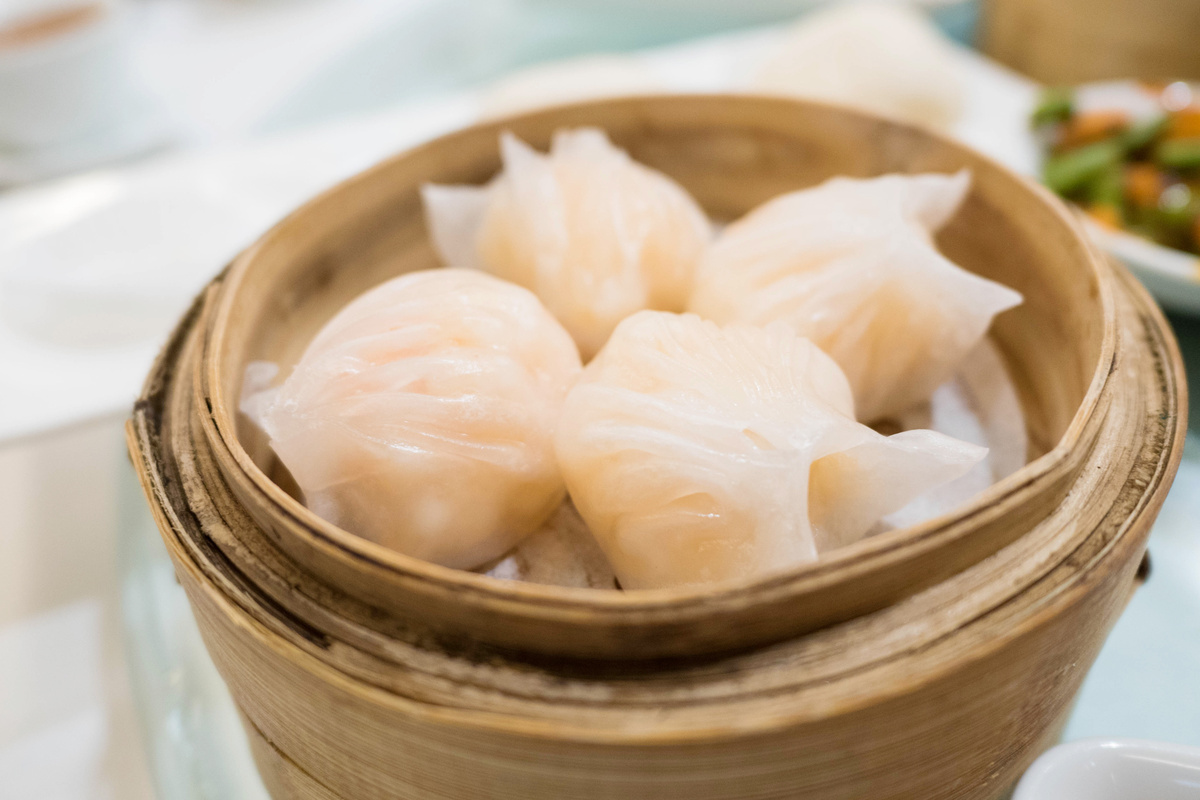
Har Gow is an absolute staple in dim sum restaurants. It is made from small pockets of dough stretched over a minced shrimp mixture. This is the dish that dim sum chefs’ slave over, trying to get them right. Basically, the more pleats there are in the dumpling, the better their skills. So, if you get a dumpling with a lot of pleats, chances are it will be good.
Har Gow usually comes in a group of four in a bamboo basket. They’re best eaten dipped in some soy sauce and chilli oil.
Shumai (Pork And Shrimp Dumplings)
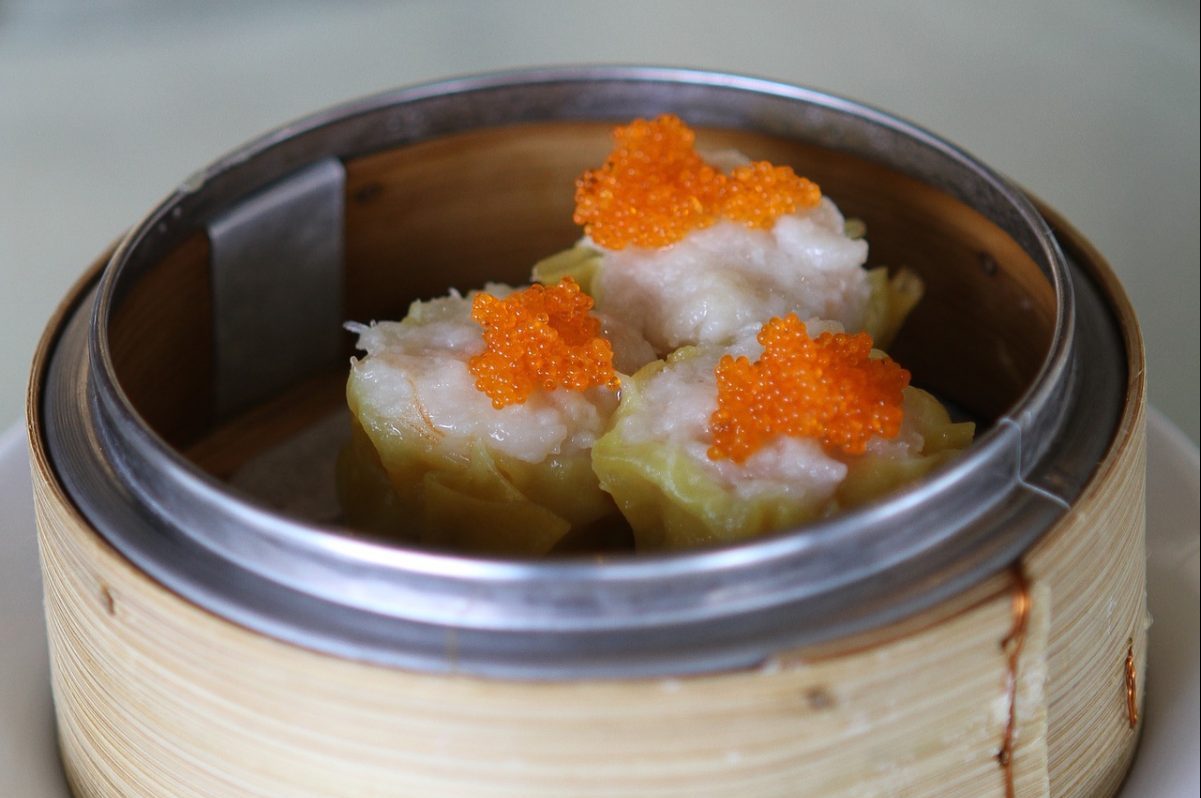
© Photo by Nipapun Jiranukul on Pixabay
If you’re looking for something bigger and meatier, then you should try this dim sum variety. Shumai is a steamed dumpling with shrimp, minced pork, bamboo and mushrooms in it. All these goodies are wrapped in an egg dough skin and topped with a garnish of orange. This garnish will be carrot in cheaper restaurants and crab roe in more expensive places.
If the dim sum quality is good, this dish is fresh, meaty and incredibly satisfying. Dip the Shumai in chilli oil or soy sauce depending on your own preferences.
Wu Gok (Fried Taro Croquette)
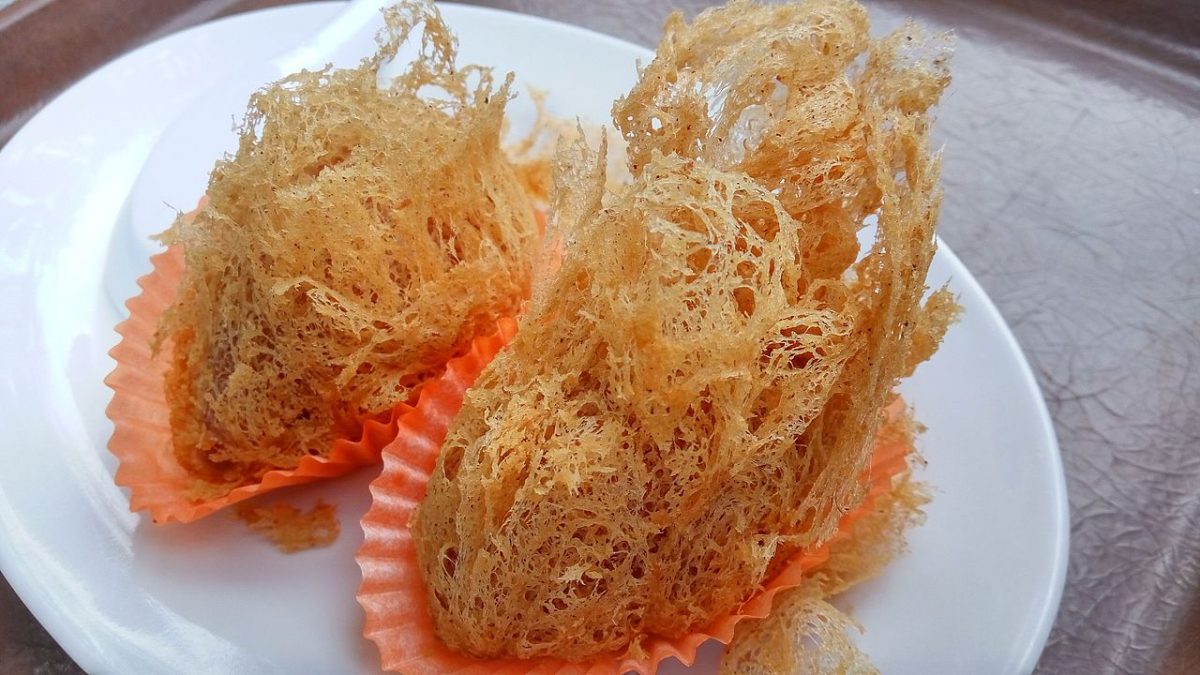
© Photo from Wikimedia Commons
Wu Gok is a type of meat-filled, mashed potato ball. This sounds a little greasy, but they’re actually a delight to look at and to eat. The outer surface is a lattice of fried batter. And in the middle is a ball of taro root with ground pork inside. When this dim sum dish is done wrong, it will be greasy and oily. But when it’s done perfectly, it’s intricate and delicately crispy.
When you order this dim sum dish, look at the paper underneath it. If it’s soaked in oil, then it’s not worth eating. But if the paper is dry, take a bite and you’ll probably discover a new favourite!
Dan Ta (Egg Tart)
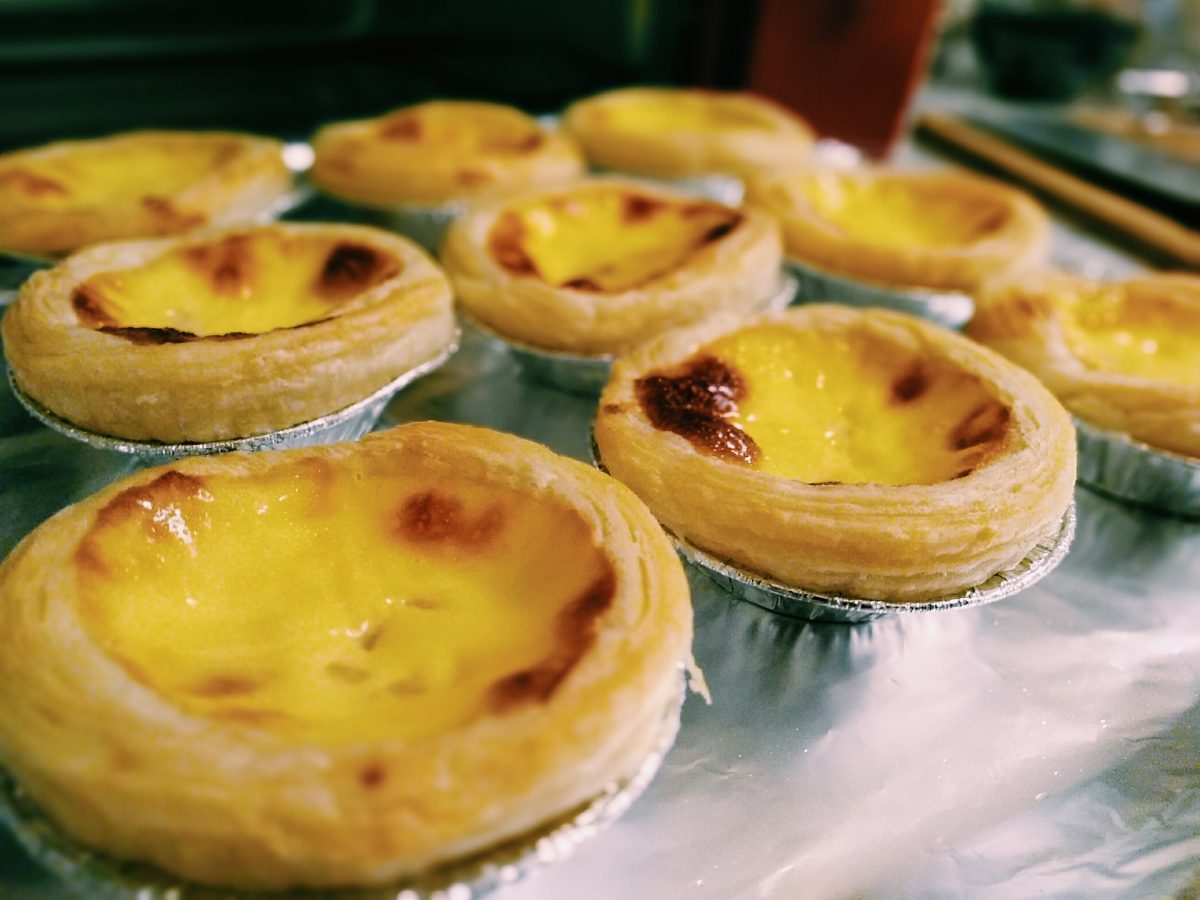
© Photo by zcf0508 on Pixabay
The humble egg tart is a traditional dessert dim sum dish. And when done right, they can be a revelation. This dish was brought to China by the Portuguese via Macau. And today, it’s so popular in southern China that entire bakeries are devoted to the art. They’re filled with sugar, eggs, and vanilla, but aren’t as sweet as you might think. Instead, they have a creamy texture that’s just amazing.
An egg tart can be eaten hot or cold. This is one dim sum dish that you can take home with you for a midnight snack.
Ham Sui Gok (Fried Pork Dumplings)
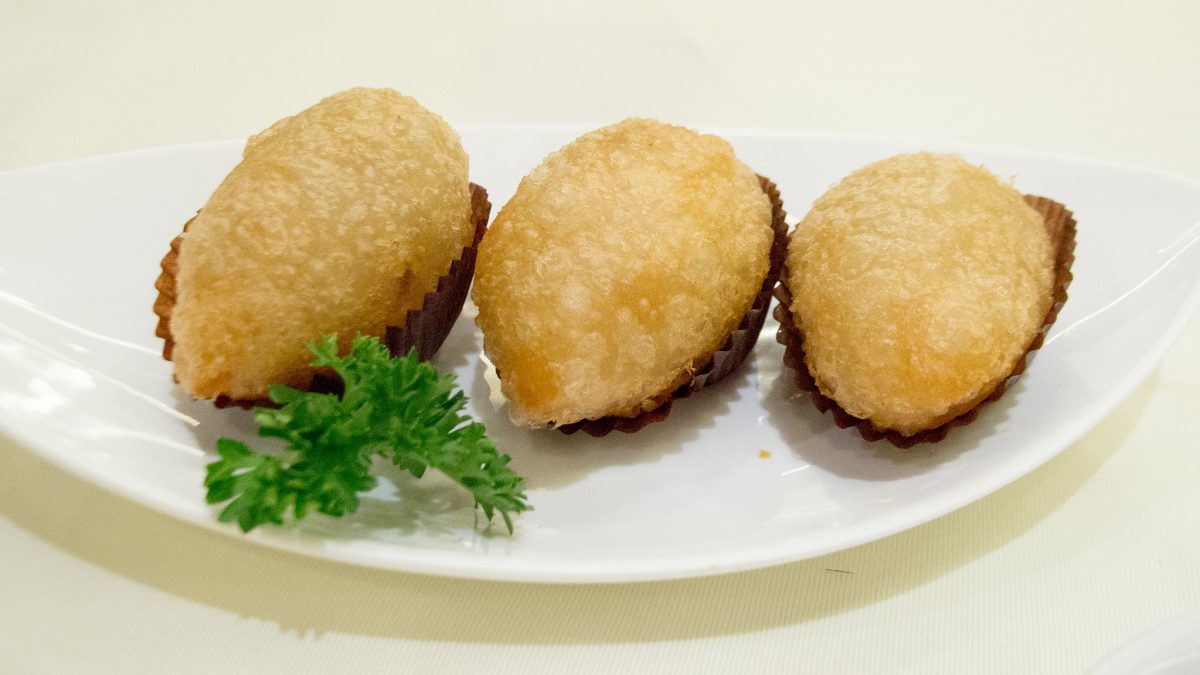
© Photo by See-ming Lee on Flickr
If you like food that’s slightly heavier, then try this dim sum dish. It’s basically a deep-fried mochi or rice cake stuffed with pork. Each dumpling should be golden brown, with crispy pastry outside. The inside should be hot, savoury, and gooey. It’s the perfect dim sum dish for sharing, because you probably won’t want more than one.
You can eat this dim sum dish with dipping sources or on its own. Try chilli sauce if you like a bit more spice with your food.
Cheong Fun (Steamed Rice Rolls)
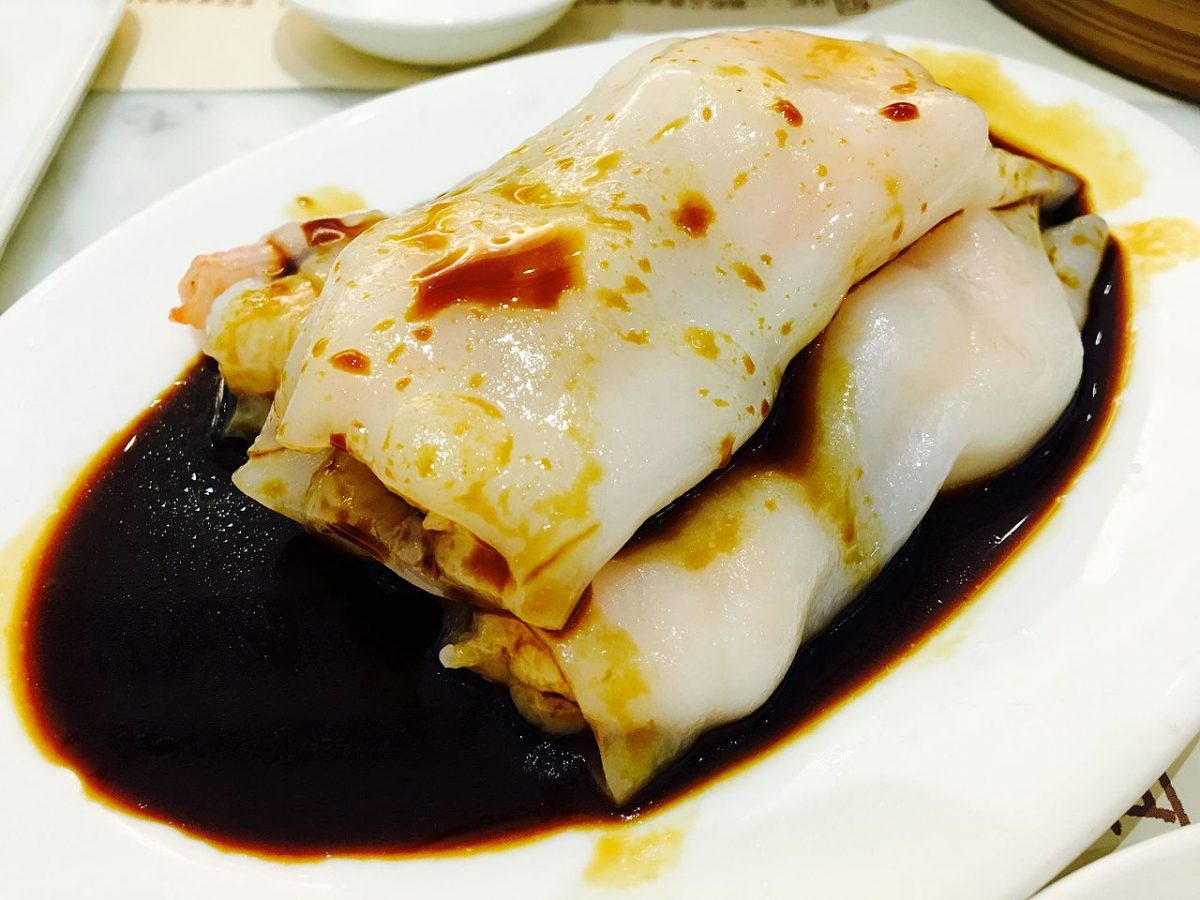
© Photo by ZhengZhou on Wikimedia Commons
Cheong Fun is one of the most popular dishes at dim sum restaurants. They’re made with rice starch and filled with shrimp or youtiao, which are deep-fried Chinese crullers. They look a little like spring rolls, but they’re steamed rather than fried, which is why they’re soft. With sweet soy sauce drizzled over the top, they’re a messy but delicious addition to your dim sim meal.
Feng Zhao (Chicken Feet)
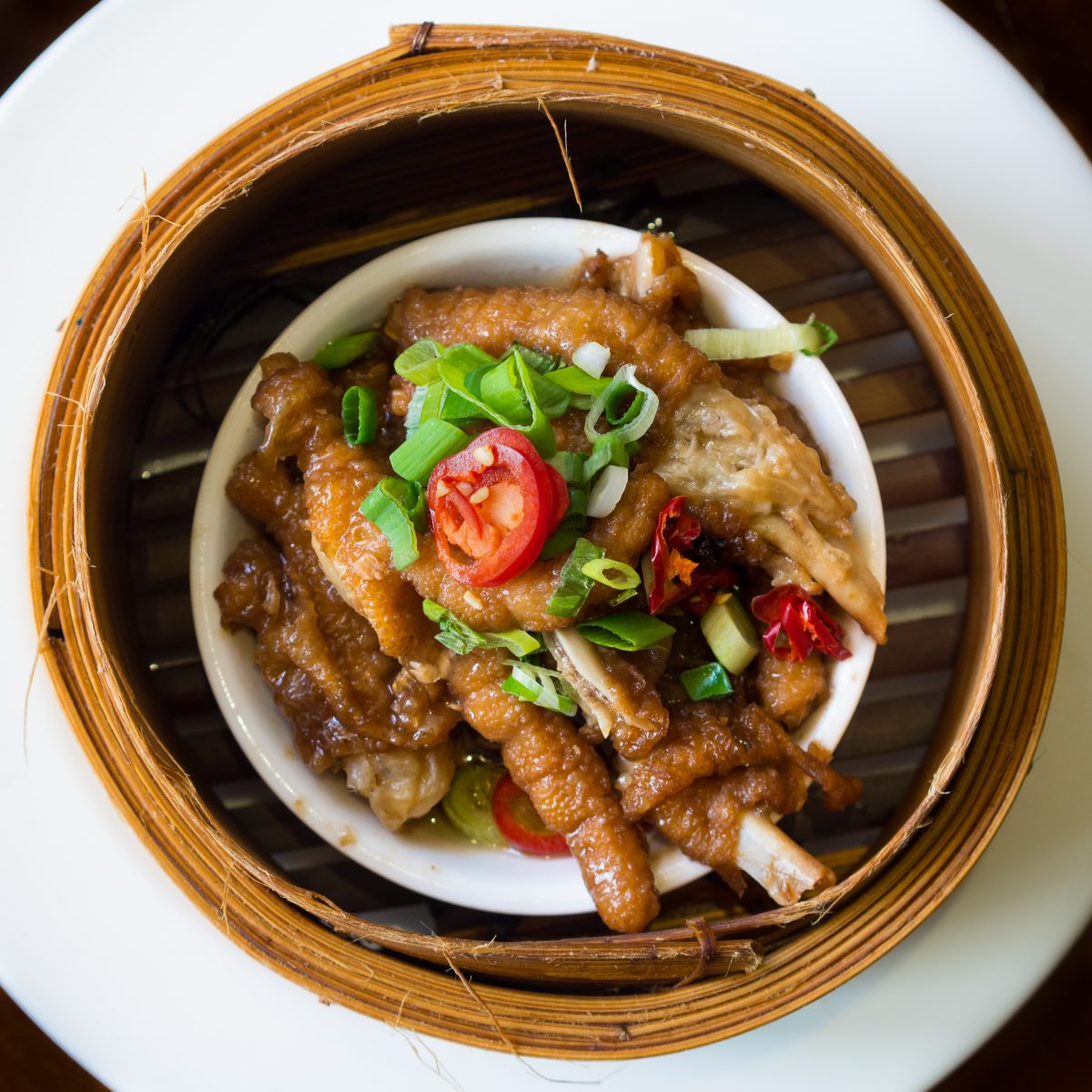
© Photo by Takeaway on Wikimedia Commons
Eating chicken feet sounds a little strange to foreigners. It isn’t a part of the chicken that’s usually eaten outside of Asian countries. But if you enjoy chicken skin and thick, tasty sauces, you’ll probably like this dim sum dish. The chicken feet are usually deep-fried and served with a savoury sauce. This dish is all about the flavourful skin, so don’t expect a lot of meat on them.
It can be a little awkward to eat this dim sum dish. Pick it up with your chopsticks and use your front teeth to strip the skin. Obviously, you don’t have to eat the bone.
Ma La Gao (Sponge Cake)

© Photo by Blenpeams on Wikimedia Commons
Another common dim sum dessert is the humble sponge cake. Made with eggs, sugar, and cake flour, this is a deceptively simple offering. It’s steamed rather than baked and is light, fluffy and moister than one might think. This dim sum makes a surprisingly satisfying sweet snack at the end of a meal.
Lo Mai Gai (Sticky Rice With Chicken In A Lotus Leaf)
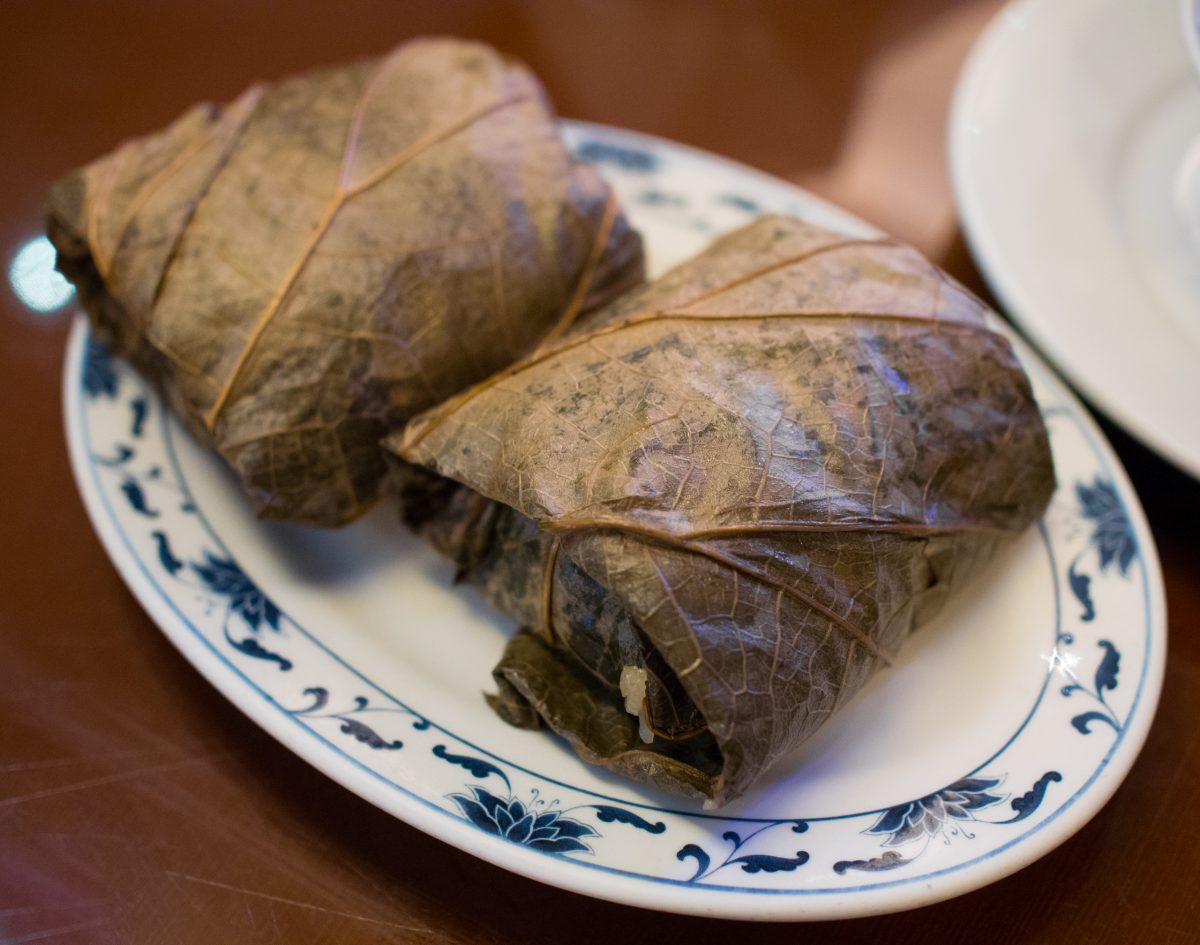
© Photo by Takeaway on Wikimedia Commons
When you eat dim sum, you have to expect little packages wrapped in leaves. The insides can vary a bit between restaurants, but some things don’t change. The serving is wrapped in a lotus leaf, so you get to open it like a small present. Inside, you’ll find a small square of sticky rice. Bite into it and you’ll taste dark chicken meat, mushrooms, and Chinese sweet sausage. Some versions also contain salted egg yolk or dried scallops for extra flavour.
This dim sum dish doesn’t usually need extra sauce. The combination is tasty enough on its own.
Char Siu Bao (Steamed Pork Buns)
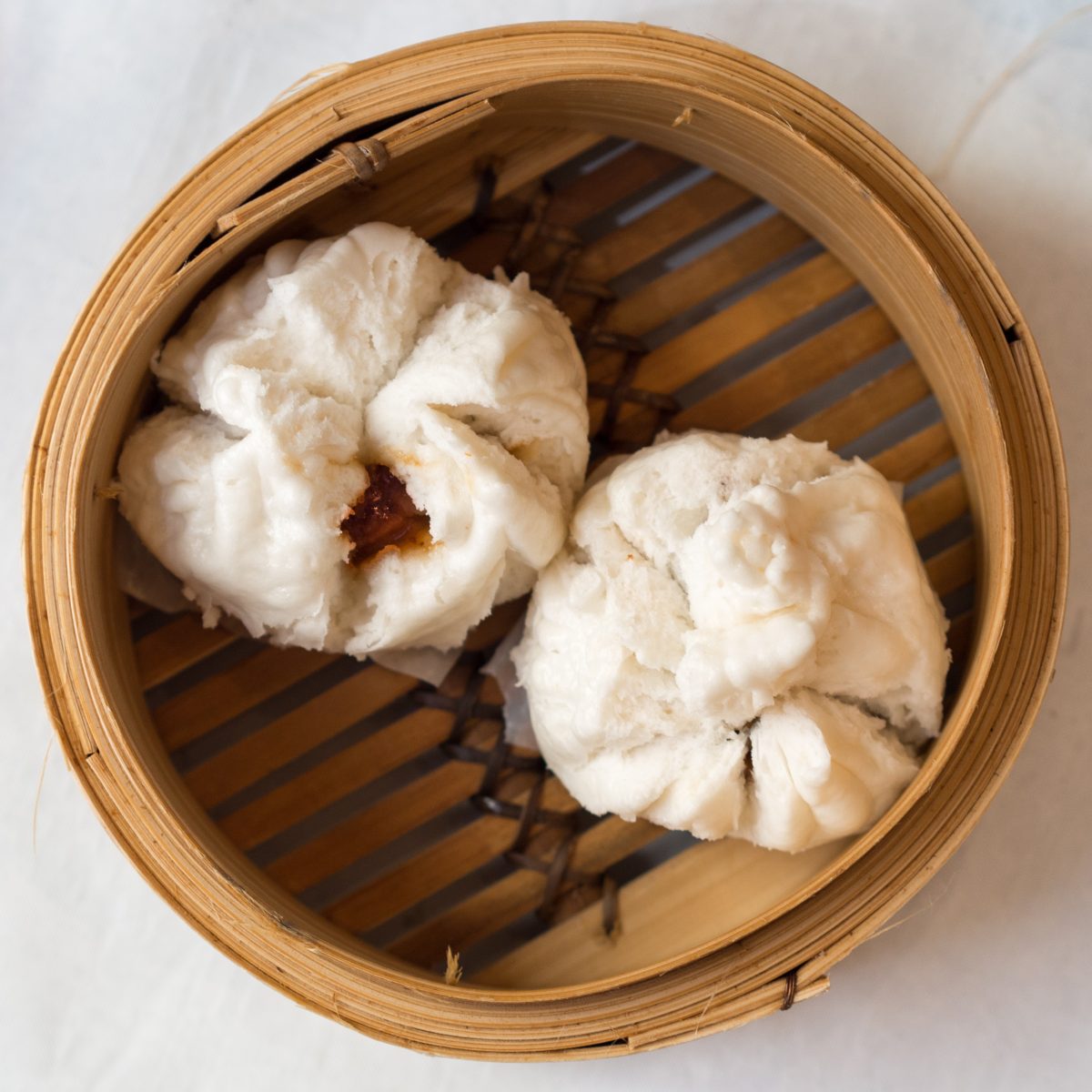
© Photo by Takeaway on Wikimedia Commons
Char Siu Bao is a steamed white bun made with roast pork. These buns are usually spiced with soy sauces, honey, and five-spice powder. You’ll find these dim sum dishes all over Hong Kong and they’re also a popular breakfast dish. They’re fluffy and spongy, spicy and sweet, and one of the best dim sum dishes around.
You won’t need any extra sauces on these buns. And as an added bonus, you can eat them with your hands so there’s no struggling with chopsticks.
Jian Niang Qie Zi (Shrimp Stuffed Eggplant)
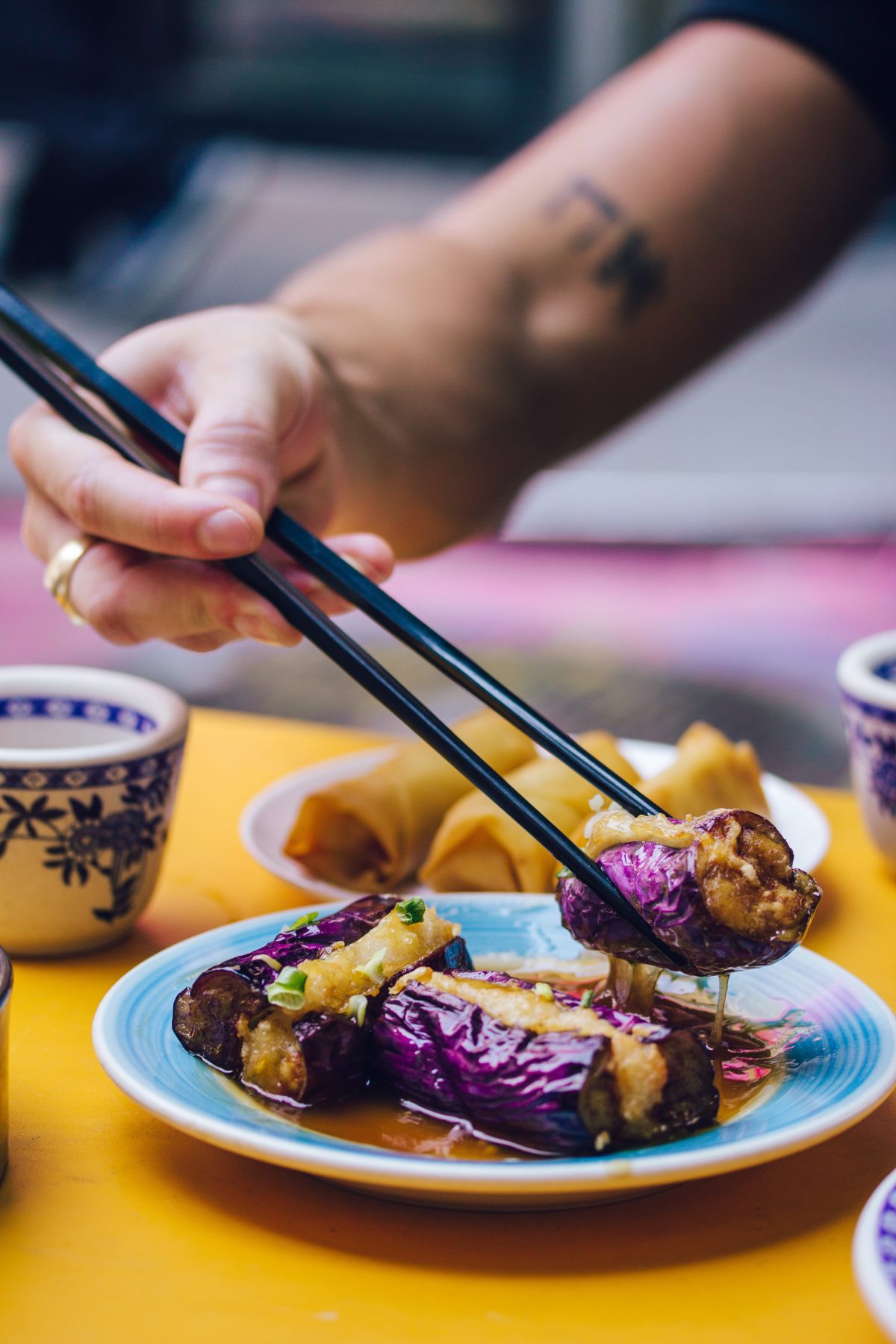
© Photo by Krista Stucchio on Unsplash
Eggplant isn’t the kind of dish you probably think about in connection with dim sum. But this version is absolutely delicious. It’s served with a sweet and sour sauce and stuffed with shrimp. Long, thin Chinese eggplant is used for this dim sum dish, before it’s pan-fried and then braised.
You definitely won’t need any extra sauces for this dim sum. Just be very careful when you’re eating it as it tends to drip.
Chun Juan (Spring Rolls)
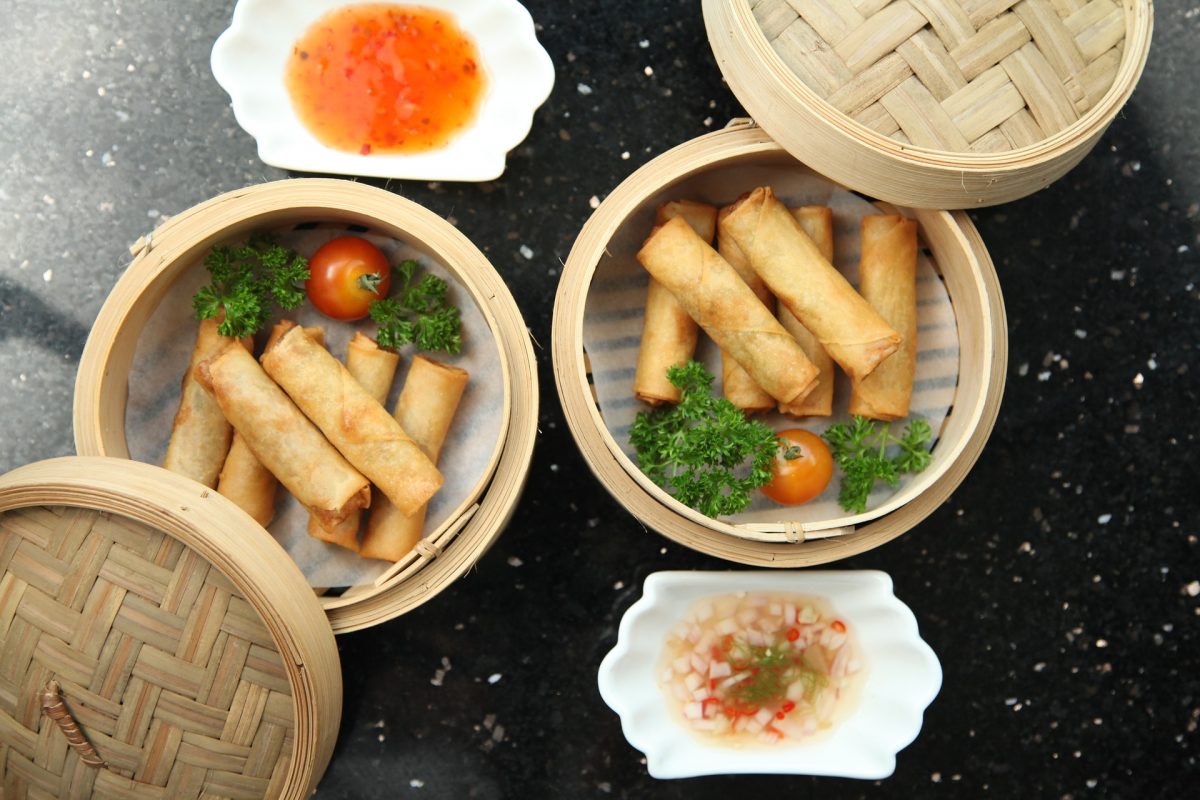
© Photo by Jonathan Valencia on Pixabay
Spring rolls are a staple in Chinese food, both in Hong Kong and out of it. They’re also a really popular dish for dim sum as well. In Hong Kong, the skin is thinner and the taste of the fillings more balanced than you’ll find in most restaurants back home. They usually come filled with pork, some vegetables, and spices. You can also get vegetarian options.
This dim sum is dipped in soy sauce or chilli oil before eating.
Lo Bak Go (Radish Cake)
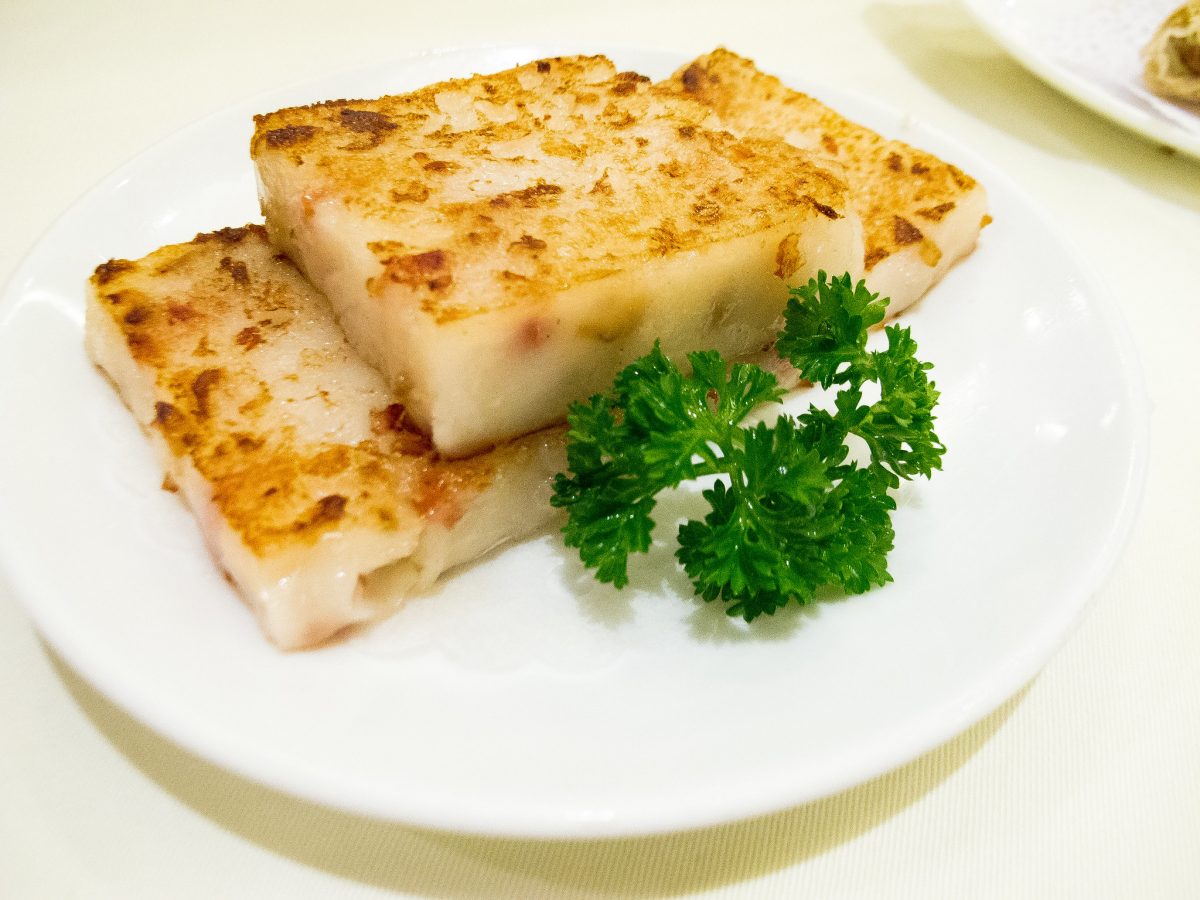
© Photo by See-ming Lee on Flickr
This dim sum dish is sometimes called turnip cake even though it’s made using shredded radish and rice flour. They can also contain ingredients like dried shrimp, water chestnuts, or diced ham. This is not only a popular dim sum dish; it’s also commonly eaten for breakfast in many Asian countries.
The taste of this dim sum cake is smooth and subtle, and you can eat it with garlic soy sauce or chilli.
Xiao Long Bao (Broth Filled Pork Dumplings)
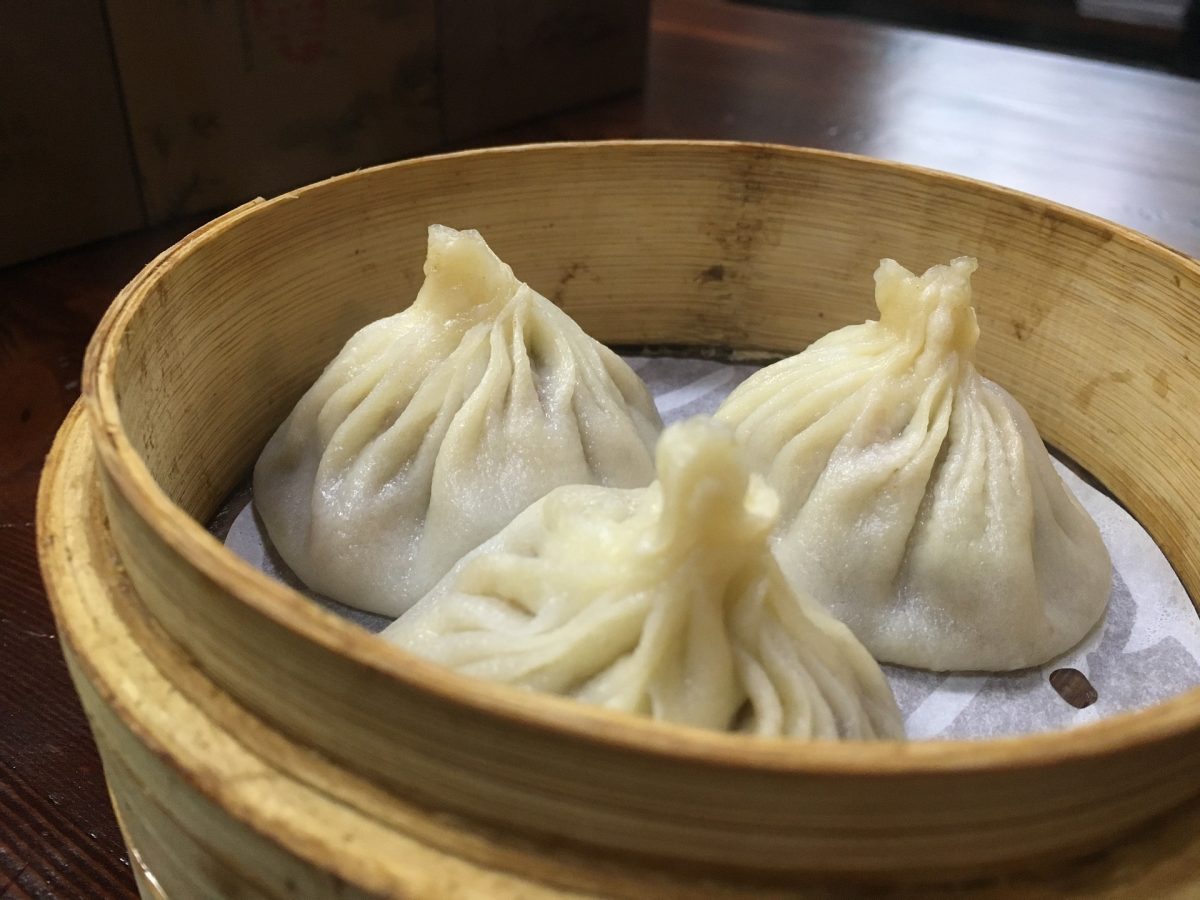
© Photo by Jing on Pixabay
If you don’t eat anything else, you must eat Xiao Long Bao dumplings. When you bite into these small pockets of goodness, they release a flood of tasty broth into your mouth. Usually steamed and filled with pork, they can also include other fillings like crab meat and roe. The soup is created by wrapping a solid meat aspic inside the thin skin. As the bun is steamed, the aspic melts into the soup and fills the bun, ready to be eaten.
When this dim sum dish first comes out, it will be incredibly hot. If you just bite into it, you’ll end up scalding your mouth and ruining the experience. Scoop a dumpling out of the bamboo basket with your soup spoon. You can add some extra spices at this stage: dark vinegar and ginger matchsticks are particularly good. If you hold the dumpling on your spoon for about 3 minutes, it will be cool enough to bite. You can also puncture it and let the juices spill out onto the spoon, but this wrecks the experience a little.
Jian Dui (Sesame Balls)

© Photo by Meinaidchowzoa on Wikimedia Commons
Jian Dui are a deep-fried dim sum option. They’re balls of flour that are filled with red bean or sweet lotus paste before deep frying. After frying, they’re rolled in sesame seeds. This makes them a delicious mix of flavours and textures. Crunchy, chewy, sweet, and savoury, you’ll get them all in each delicious bite. They’re not the lightest dim sum dish though, so don’t go overboard.
Bo Lo Bao (Pineapple Buns)
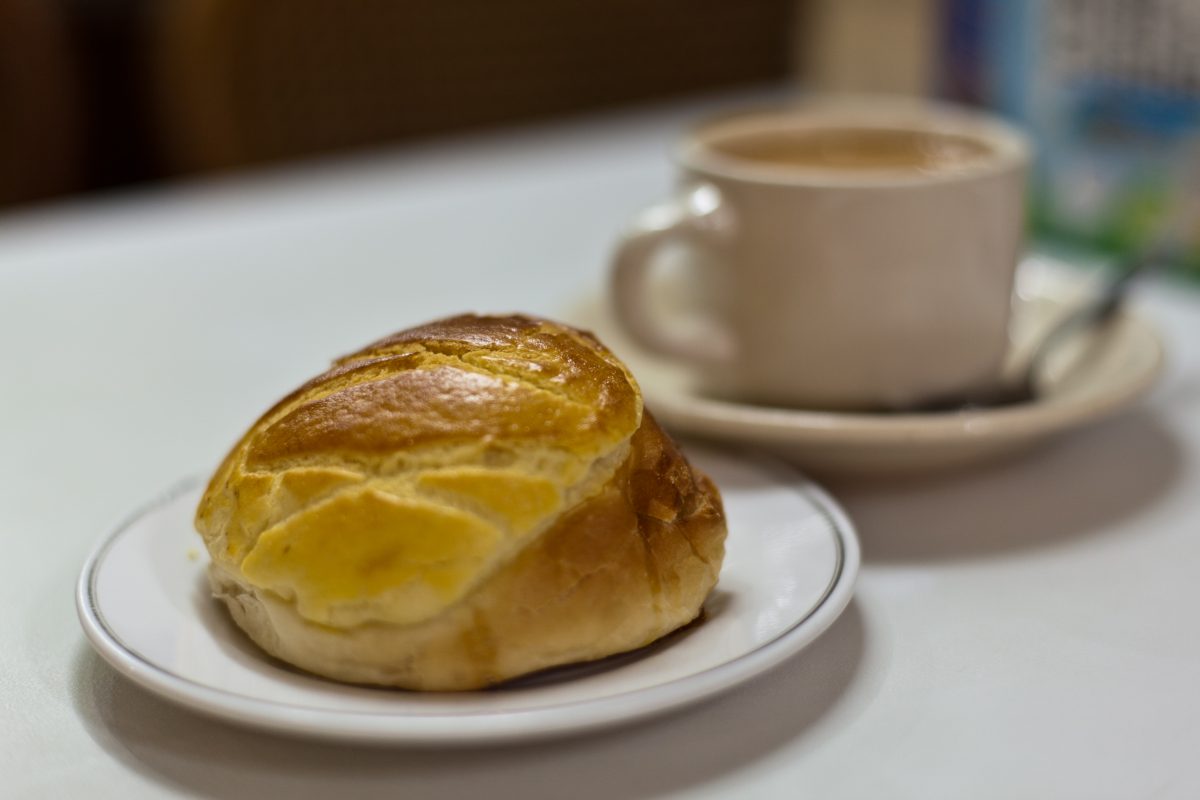
© Photo by Dennis Wong on Flickr
Bo Lo Bao is the perfect way to finish your dim sum meal. Somewhat inaccurately called pineapple buns, they’re bread rolls that often contain a sweet egg yolk custard. The mild taste and soft texture make them great to nibble while you’re finishing your tea.
Eating dim sum is a group activity. So, if you’re ready to enjoy all the delicious options in Hong Kong, grab your friends and get eating!

